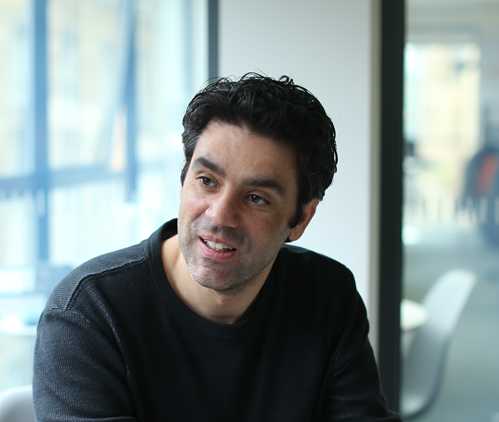
Over the past decade or so, the architectural profession has become vastly more data-intensive. Long gone are the days of draughting designs using A1 paper and 2B pencils. Tools like Building Information Modelling (BIM), once seen as cutting-edge, are now a staple of day-to-day practice, while immersive technologies like augmented reality are quietly adding a new twist to client meetings.
On top of that, the number of drawings expected per project is increasing. According to Dave Moyes, IT lead at SimpsonHaugh, Beetham Hilton Tower (completed in 2006) required around 300-500 drawings, compared to 1,000 for each tower of Deansgate Square (completed 15 years later). Architects are expected to be quick, agile, and meticulous in their designs – a combination that naturally requires significant computing power.
As such, the IT side of the profession is coming under strain, with many firms finding that their existing systems are no longer fit for purpose. For SimpsonHaugh, a midsize architectural firm based in Manchester, it was getting harder to manage this complexity. They had always sought to keep IT straightforward for staff, while avoiding time-consuming glitches and downtime. However, this was becoming less feasible for a two-man IT department working across three locations.
When staff switched en masse to remote working during the pandemic, the firm decided to bite the budgetary bullet and finally centralise its IT systems in Manchester. This, in turn, prompted a moment of reckoning: did the firm really want to invest in more physical workstations, or would virtual desktop infrastructure (VDI) make more sense?

SimpsonHaugh’s VDI crash course
“We first looked at VDI back in 2018, but at the time we didn’t feel it was an appropriate solution, mainly because of concerns around remote working for a collaborative profession,” recalls Moyes. “We spent a small fortune on traditional tin. In 2022, we were starting to think about the hardware refresh cycle and we revisited the discussions. VDI was going to be more expensive to implement, but the paybacks were significant.”
This was the start of what would become a wholesale digital transformation project, involving enterprise-wide VDI and a shift to artificial intelligence (AI). Once complete, the VDI rollout will have cost the firm around £1.21 million. At the same time, they expect to save around £1.79 million from the reduction in IT downtime. They also point to the less tangible benefits: staff have not only realised tangible productivity gains but, just as importantly, a better work-life balance.
“People can come into the office, work ‘til 5:30pm, have dinner with their kids, and then drop back in remotely for a couple of hours, as opposed to being in the office until 9pm,” says Moyes. “We have put a hybrid working policy in place, and VDI has been a game-changer when it comes to working remotely.”
The thinking behind VDI is simple: it enables users to access the computer system remotely from any device, including data-guzzling architectural applications. In principle, staff can’t tell whether they are working from a physical desktop or via VDI – both of which the firm uses day-to-day. After all, if you’re an architect who wants to get on with your design work, you don’t want the IT infrastructure to be a showcase: the more unobtrusive and supportive the better.
“SimpsonHaugh can anticipate some noteworthy benefits by transitioning to a VDI strategy,” comments Arne Helgesen, an IT leader at Sharecat. “Their remote workers will likely be more productive because remote access is more dependable and performs better. They should also budget for savings because they won’t require as much power or upkeep, while the scalability of VDI resources will enable them to respond more rapidly to shifting project demands.”
When planning the rollout, the firm decided to partner with VDI consultancy ebb3, which has helped to design and manage the VDI environment as well as provide technical support. The bedrock of the solution is Citrix Virtual Apps and Desktop, which SimpsonHaugh runs from its own data centre in Manchester.
The firm has also invested in ControlUp’s DEX Platform, an analytics and monitoring application which identifies where problems have arisen and quickly homes in on a solution. End-users have transparency over what is happening, alleviating any frustration they may have with the ‘new system’. Deploying the solution, says Moyes, probably saved SimpsonHaugh an estimated £35,000, equivalent to the cost of recruiting a person to do the same job.
“We’ve had issues with users working remotely in the past, where they’ve complained about performance or lag,” says Moyes. “Before DEX, it was very difficult to give them any metrics about what was going on. Through DEX, we can pinpoint where the issue is – it might be that they’re just too far away from their wireless router.”

Architectural Intelligence
Having completed the first phase of its VDI rollout, the firm is now expanding the technology across the business. SimpsonHaugh is also working to deploy privately-hosted generative AI across the business. Applications include automating the production of site reports, meeting minutes and schedules, as well as the production of early-stage design proposals from diverse prompts like engineering and materials specifications and rudimentary sketches. SimpsonHaugh is also experimenting with using generative AI to plan space layouts in buildings – just another application Moyes believes will make the lives of his team a shade easier (“I don’t envisage AI ever replacing an architect or an engineer,” he stresses.)
Though the rollout has been successful, Moyes notes there have been hiccups along the way. The advantage of a phased rollout, he says, is that it gives you scope to make mistakes and work out what additional support is needed. He also cautions that firms should manage their expectations: the cost savings won’t be apparent on day one.
Of course, SimpsonHaugh’s transformation isn’t too far beyond the realm of usual practice – it is purposely ‘leading edge’ rather than ‘bleeding edge,’ given the small size of the IT team.
“Implementing enterprise-wide virtual desktop infrastructure (VDI) is becoming increasingly widespread among mid-sized companies like SimpsonHaugh,” confirms Helgesen. “Many firms, especially in the architectural field, recognise the advantages of enabling flexible, remote collaboration for their workforce. The overall trend towards adopting virtual desktop solutions is gaining significant momentum industry-wide”
All this being said, a digital transformation doesn’t need to be a test laboratory. Rather, argues Moyes, it needs to be carefully chosen to fit the business, with the staff’s day-to-day needs in mind.
“VDI is good, and there’s an awful lot of benefit from it, but actually, for some businesses, it may be the wrong choice,” says Moyes. “We’ve looked at cloud on a number of occasions, but the volume of the data we’re dealing with starts to get really expensive. So trying to keep the data and computers as close as possible to each other in a private data centre is the optimal solution for ourselves.”






